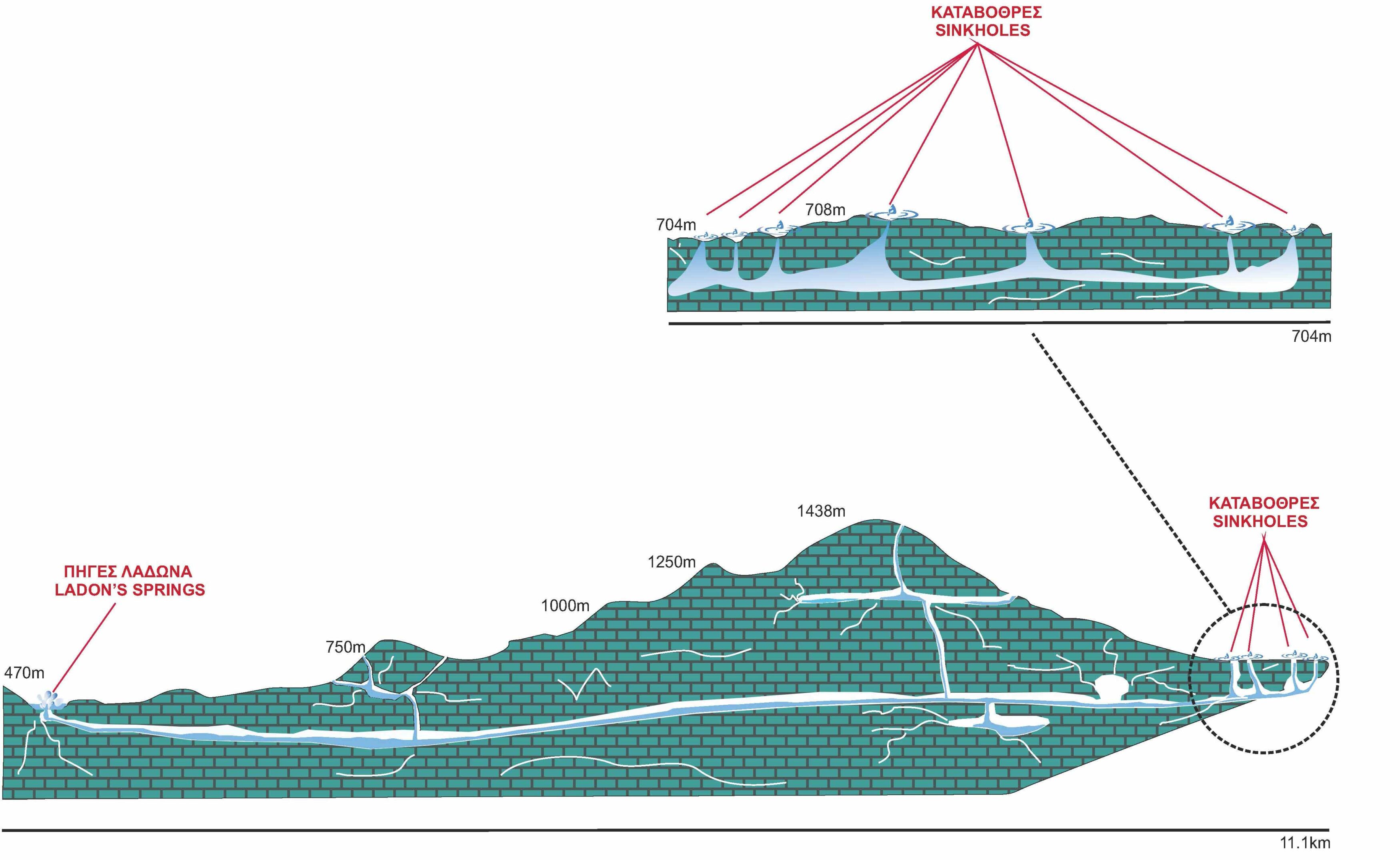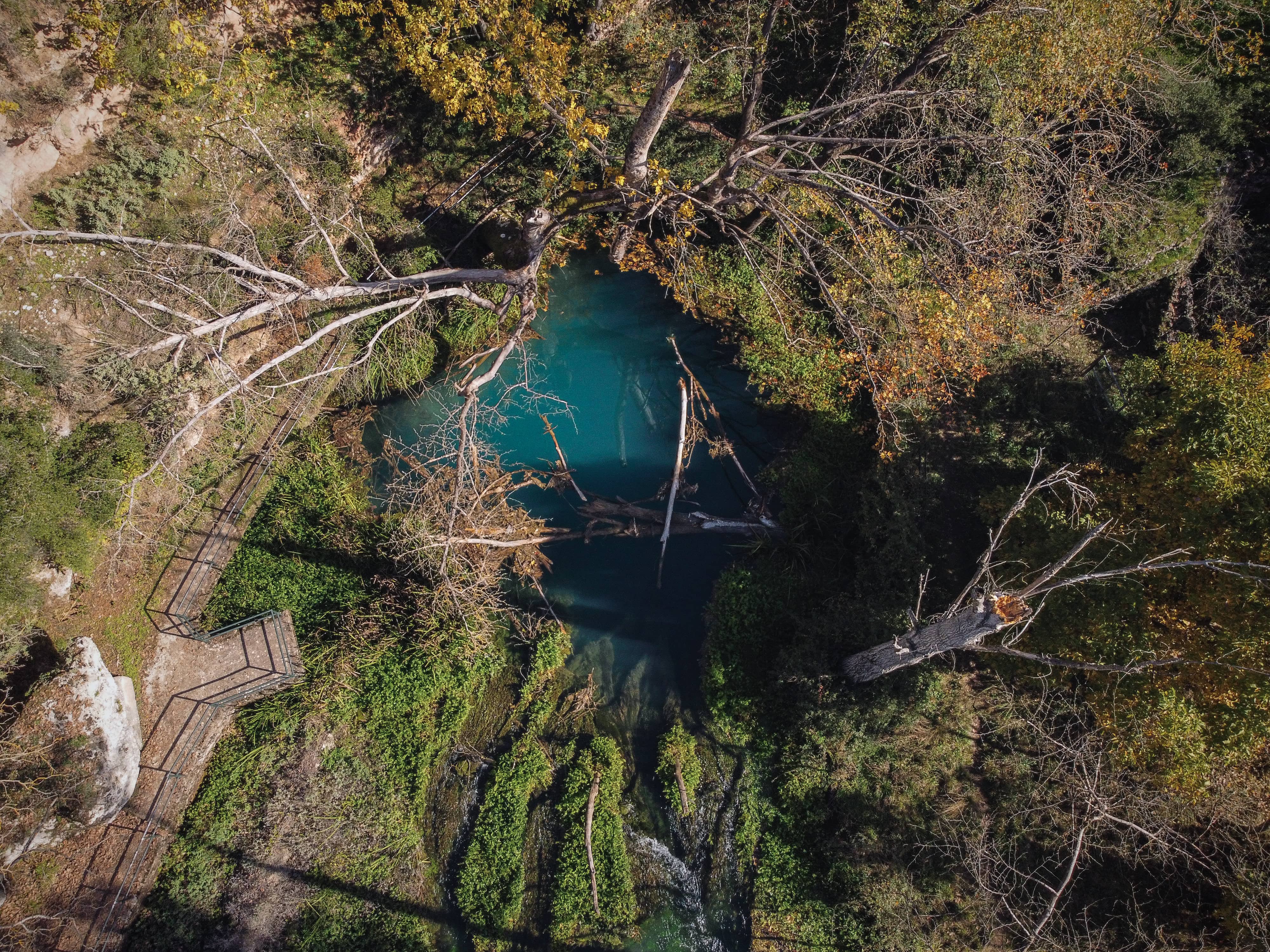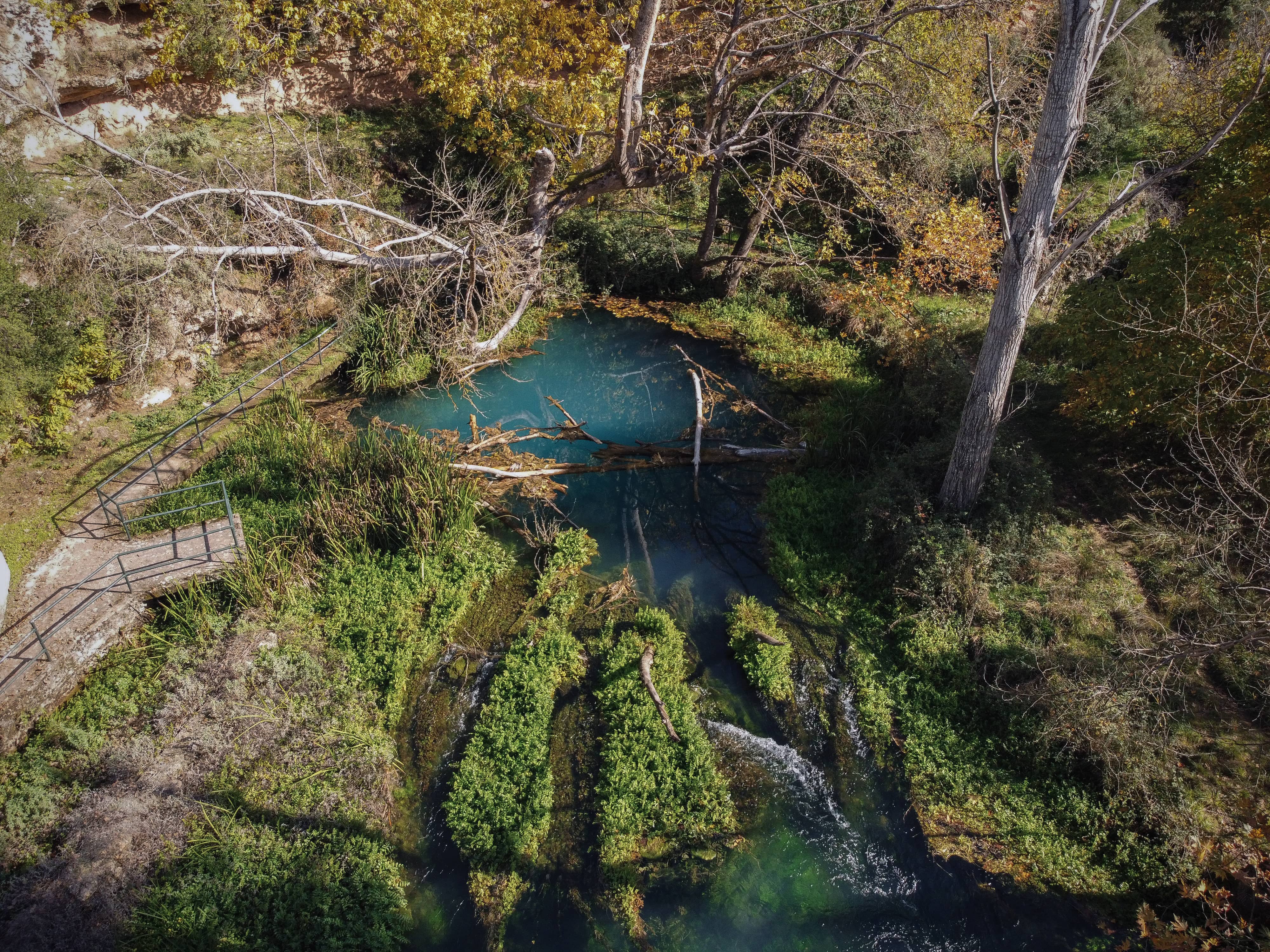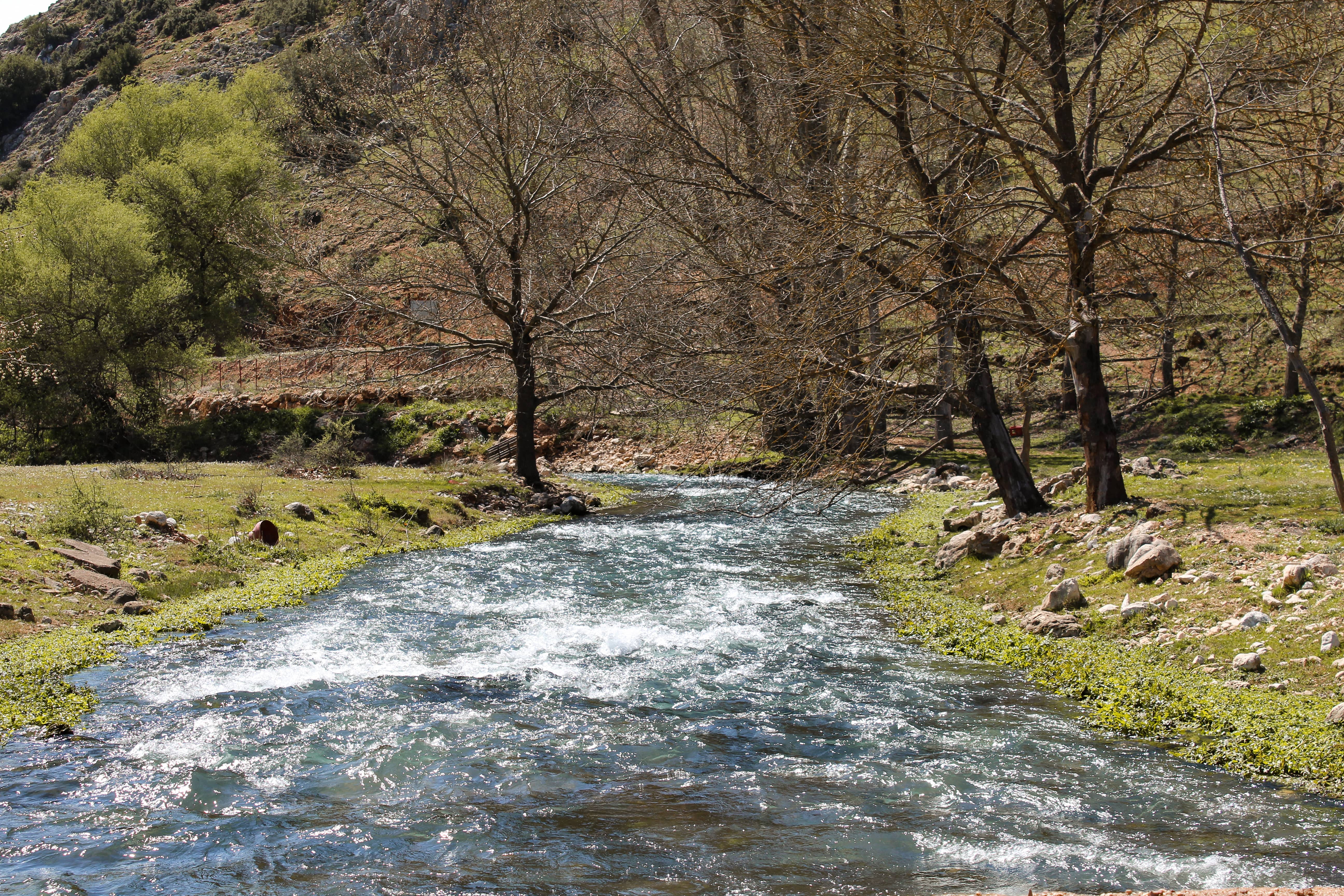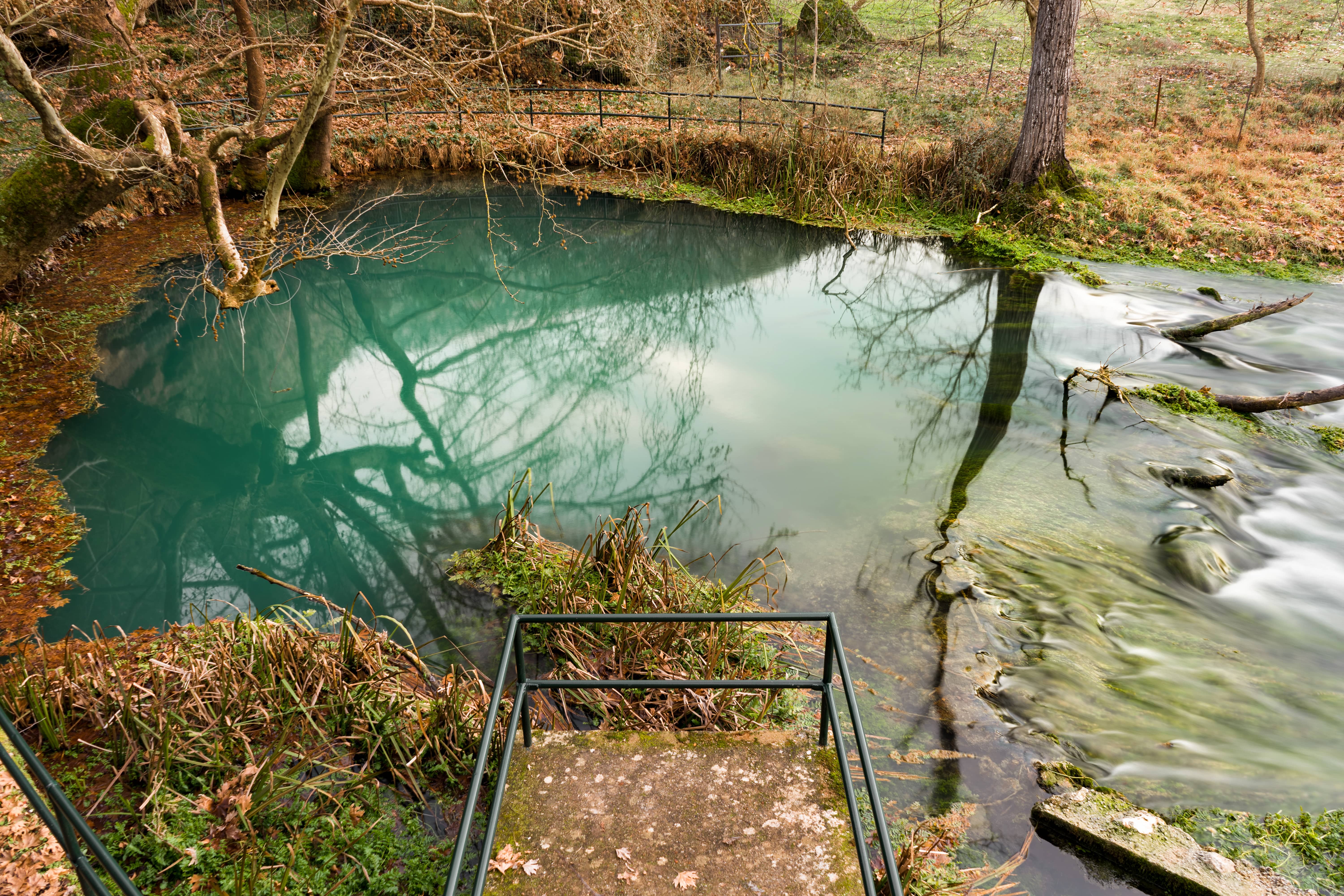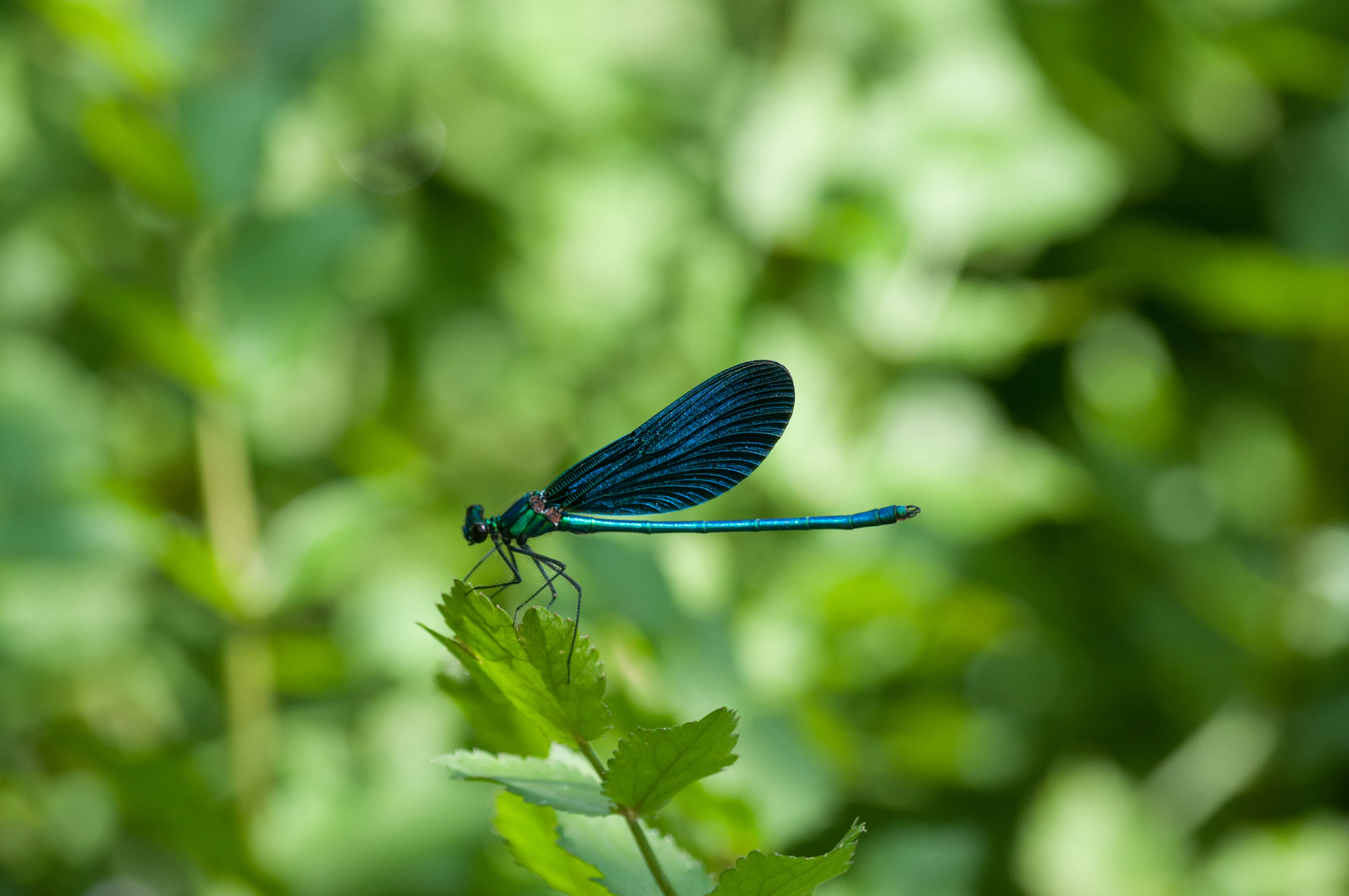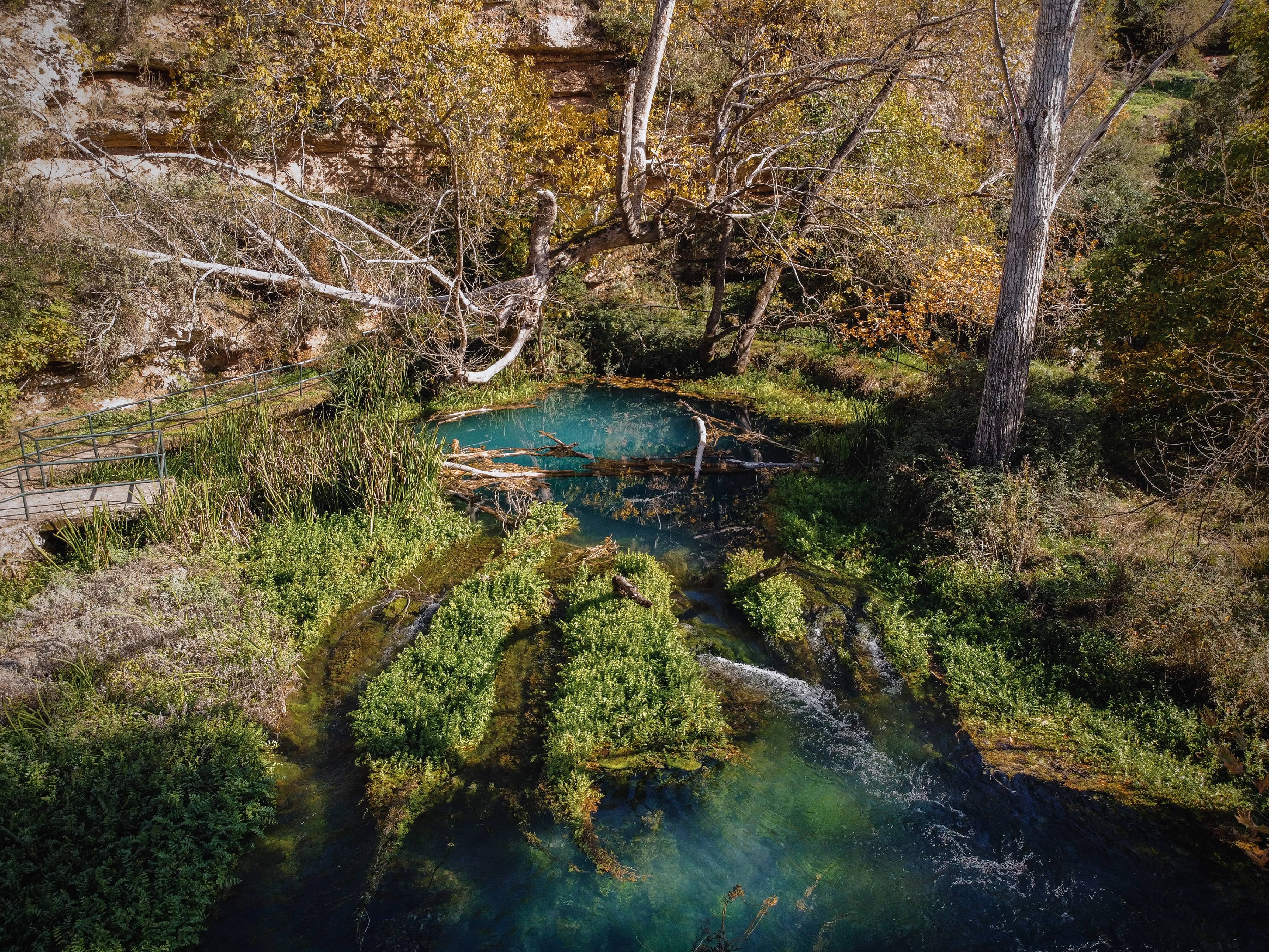THE BLUE LAKE
Ladon’s springs is the main karstic spring of the homonymous river and seem to communicate with the sinkholes of Pheneos polje through an underground karstic system. The Ladon river is also connected with mythological events as in antiquity the Arcadians considered Ladon as a deity, the son of Oceanus and Tethys. Several myths connect Ladon with the Goddess Dimitra, the Goddess Artemis, Hercules and Panas.
Geodiversity
Rainwater enriched in carbon dioxide (CO2) from the atmosphere and soil reacts with carbonate rocks such as limestone, dissolving parts of them and widening existing cracks and creating hollow / surface cavities and caves. This process, that is the dissolution of limestone by the action of water is called karstification and leads to the formation of geomorphs, which are called karst forms.
The water from the Pheneos Polje, seems to be transported through sinkholes and underground conduits and cavities(openings), extends at a distance of about 10 km and gushes rapidly in this place forming a small deep circular karstic lake whose depth does not exceed 47 m. It is a spring that has a conical shape and is connected to an underground conduit which descends with a slope of 10-15˚, for about 120 m and ends in another karst conduit that develops upwards in a square shape.
Biodiversity
Ladon river originates from a formed lake between plane trees (Platanus orientalis) and willows (Salix alba). The fauna of the area includes important amphibians and reptiles that are protected by Greek and/or international legislation. The otter (Lutra lutra) has been recorded in riparian locations of Ladonas. Several fish species live in the waters of the river, such as the Peloponnesian barb or Chamosourtis (Barbus peloponnesius) and the West Balkan trout (Salmo farioides).

